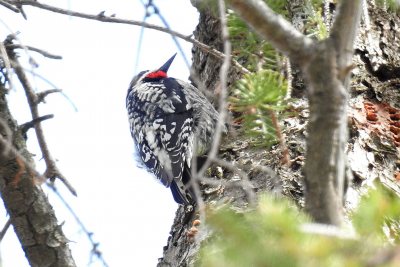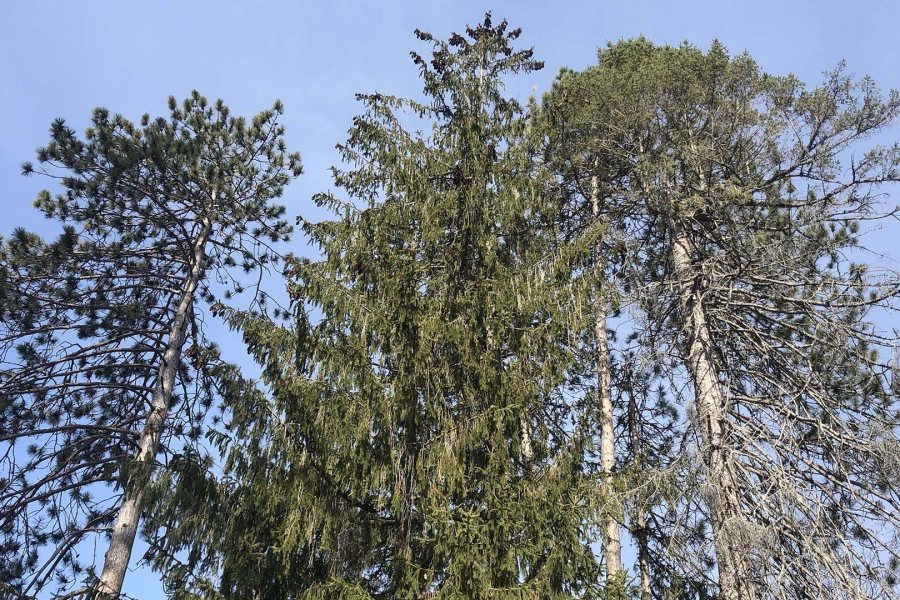
Way up in a tree on the Bates campus, a bird hammered away at the wood on a recent afternoon.
Mindful of Bates’ birding history, I was curious: What species was this rat-a-tapping bird? The possible pecking order, I figured, included two familiar Maine species: the downy woodpecker and hairy woodpecker.
Professor of Biology Don Dearborn, an expert in avian biology, cheerfully ID’d the bird after I showed him a video clip and still image.
It’s neither of those woodpeckers, he said. “It’s a yellow-bellied sapsucker,” he explained, pointing to the black and white mottling on its back “rather than a block of solid white, as with the downy or hairy.”
And, he added, its red throat makes it a male. “Male and female sapsuckers both have a red forehead — though not visible in your photo — but only the males have a red throat.”
The species’ eponymous yellow belly can be “quite variable,” he said. “This one appears to have at least a tiny bit, low on its flanks.”
The sapsucker’s chosen tree, located in a small stand of mixed conifers at the corner of Nichols Street and Campus Avenue across from the Historic Quad, is clearly a spruce.
I asked Brett Huggett, assistant professor of biology and architect of the Bates Canopy website, which species. “Are its branches hanging down?” he asked me. (Yup.) “Then it’s a Norway spruce.”
The sapsucker is a migratory bird, so it can seem a bit more rare in Maine than the year-round downy or hairy woodpeckers. As its name suggests, the sapsucker drills holes in a tree and feeds on the sap that oozes out.






